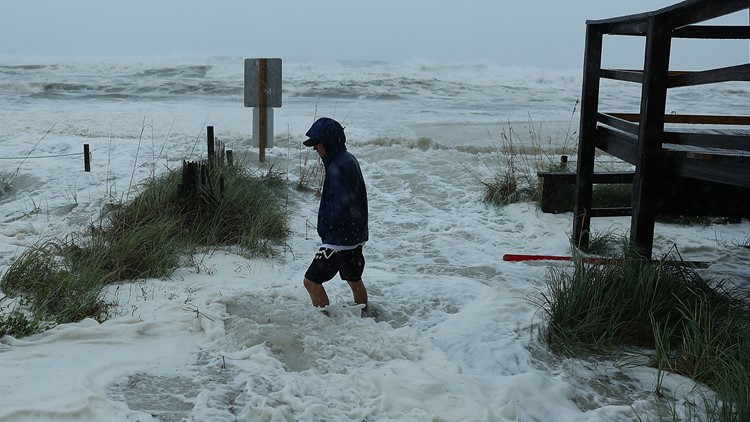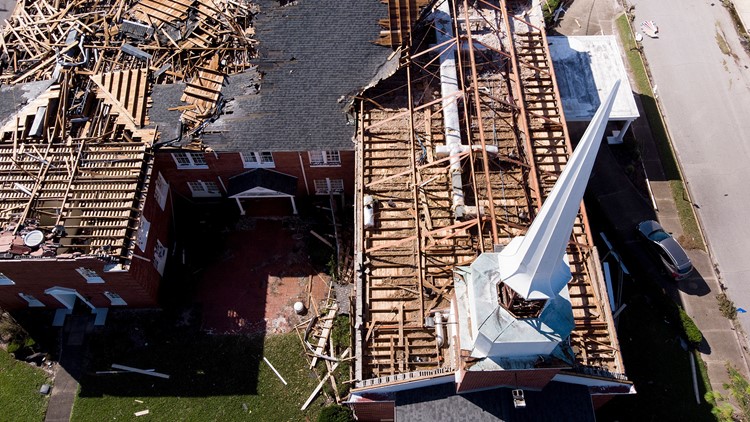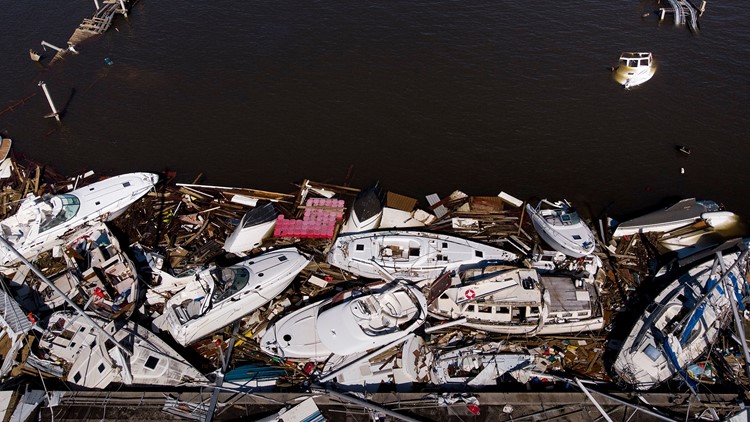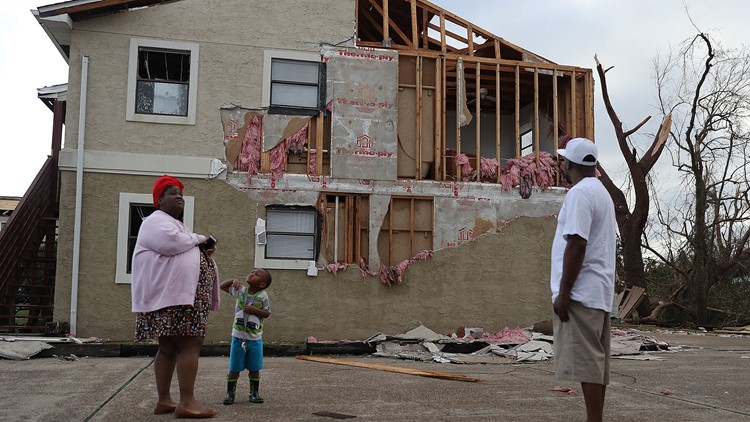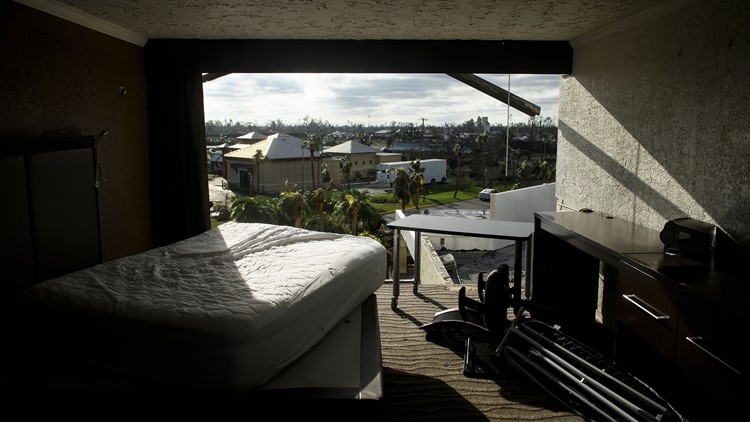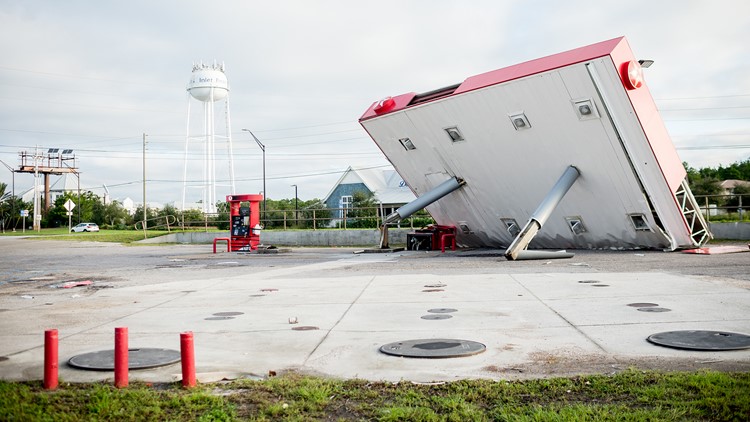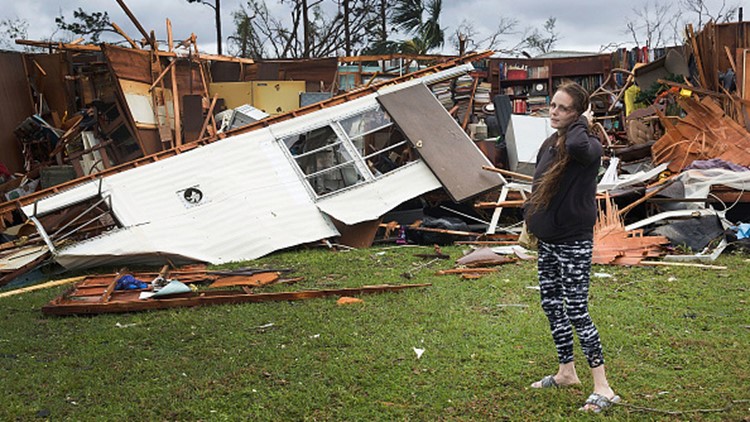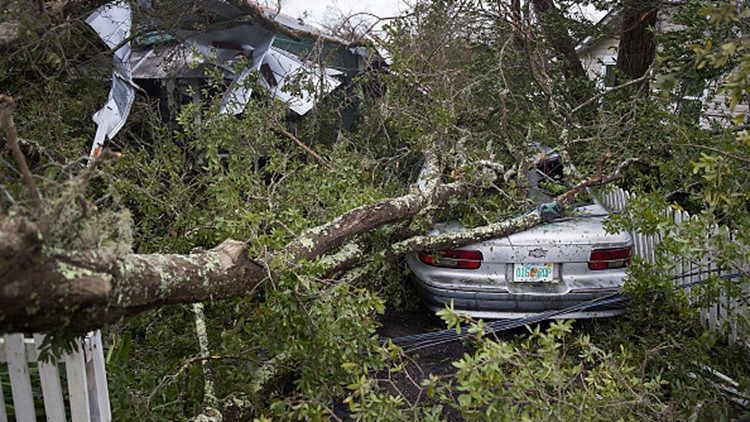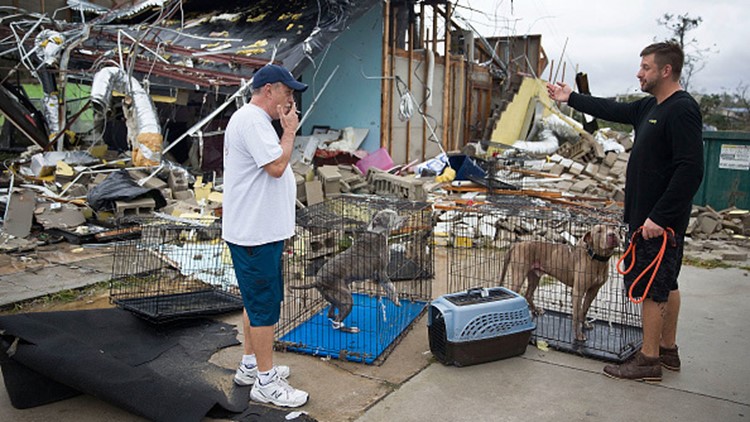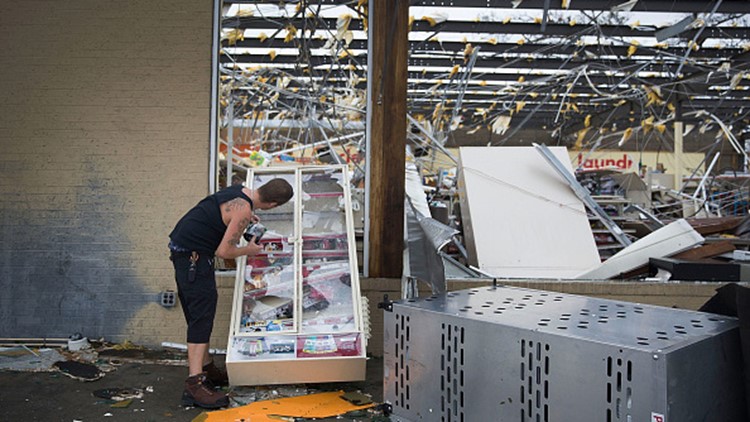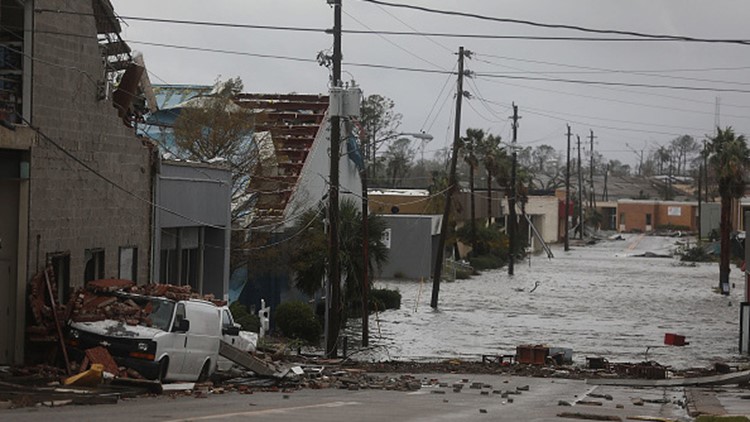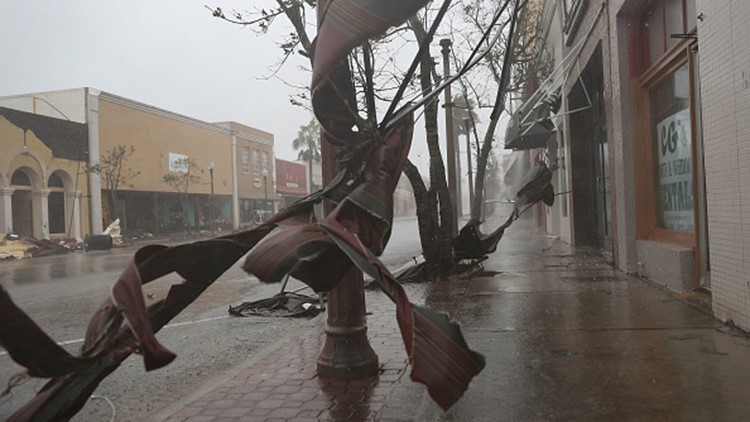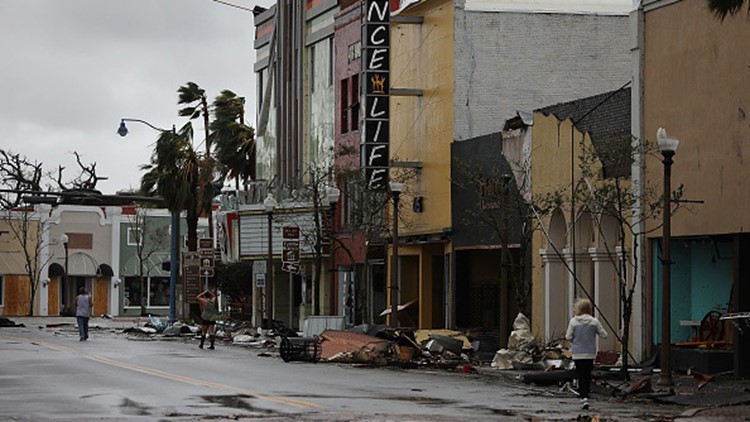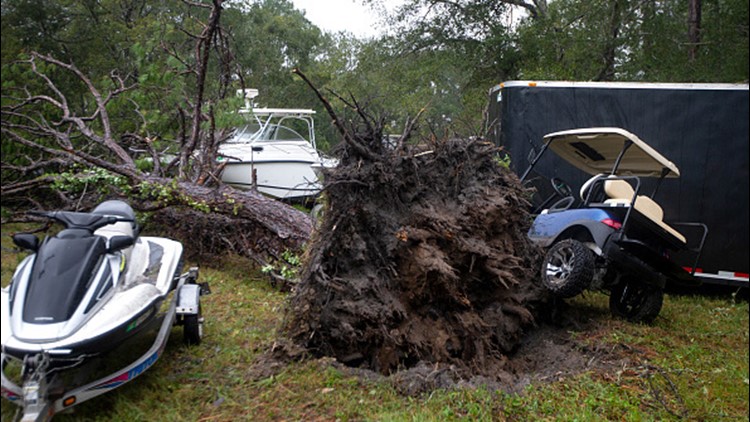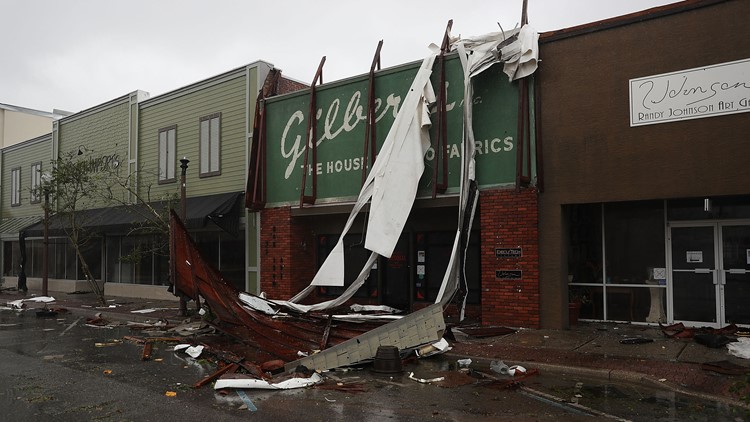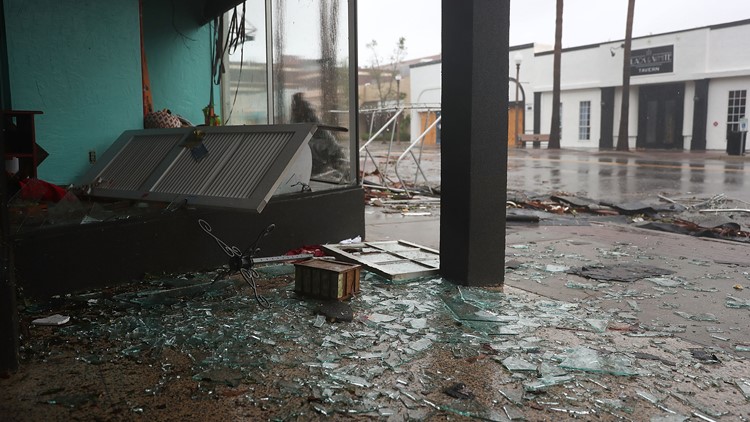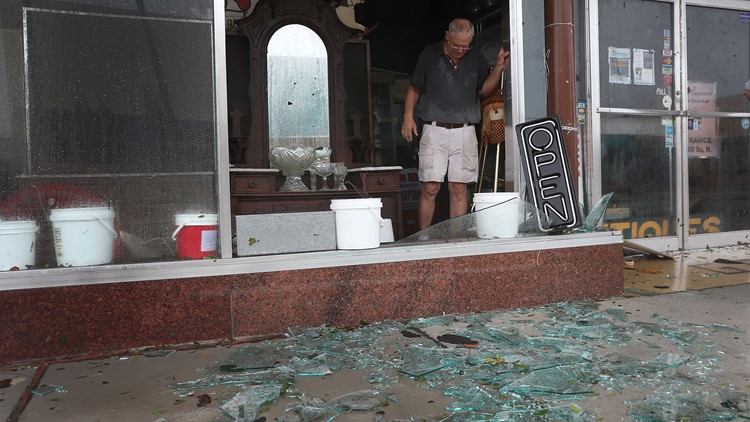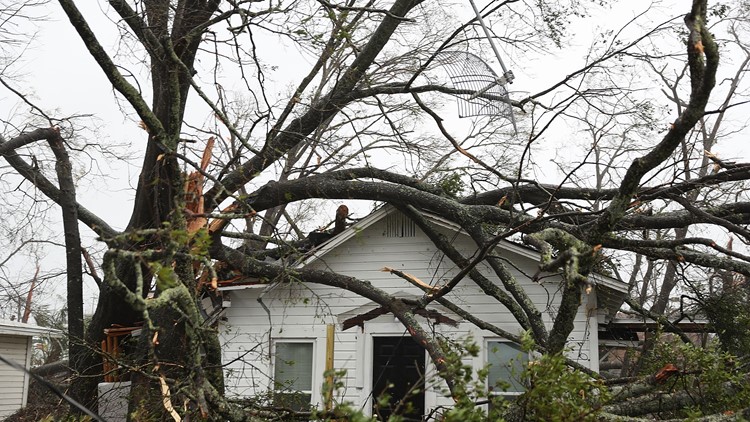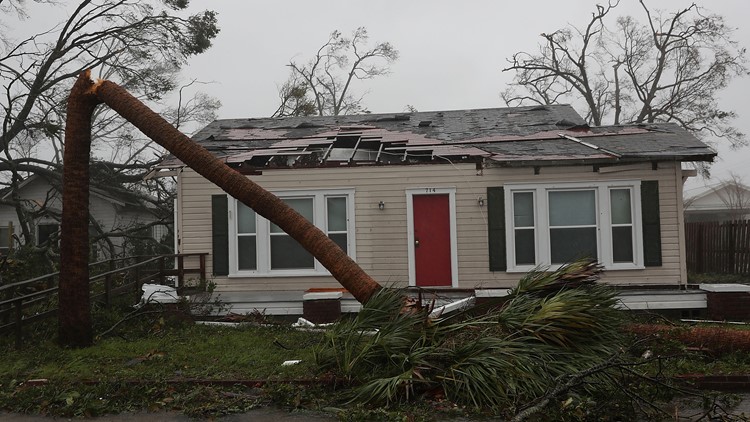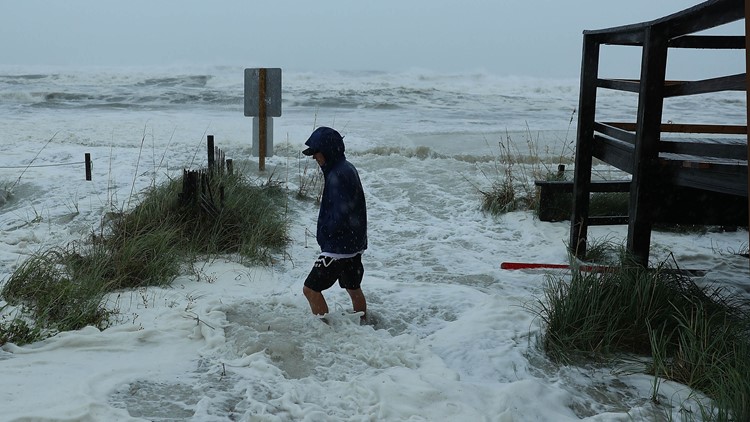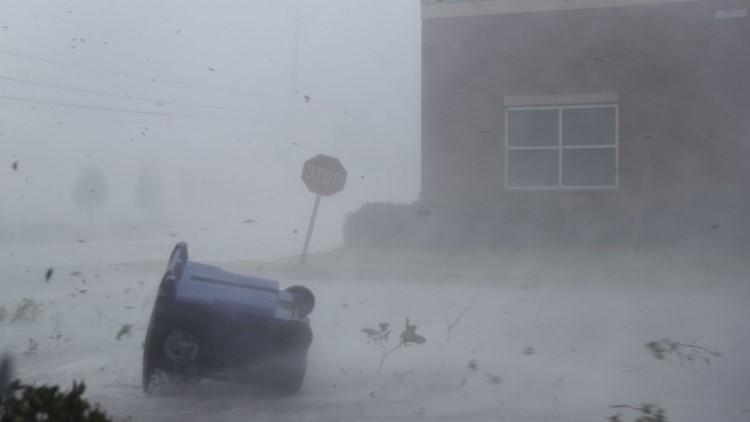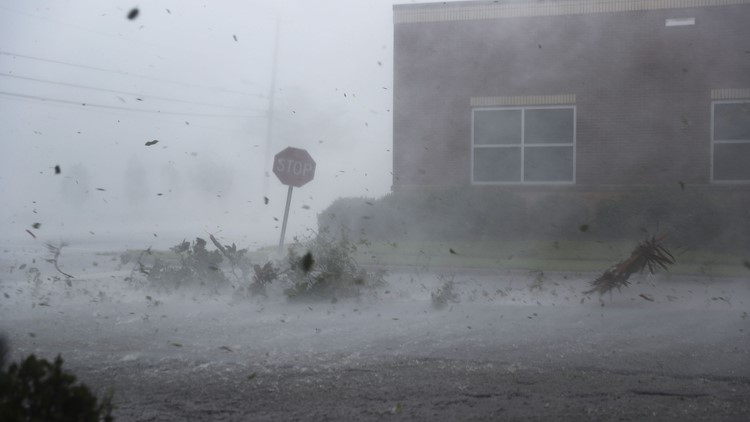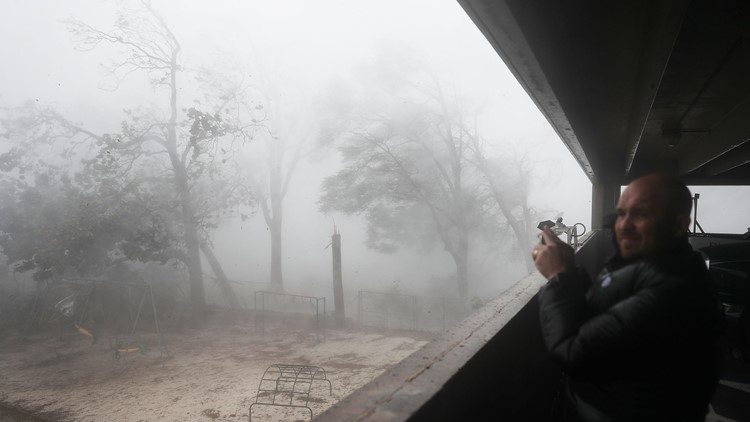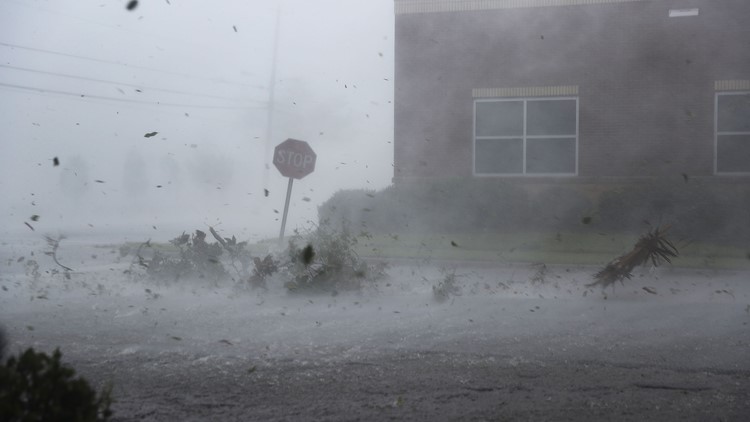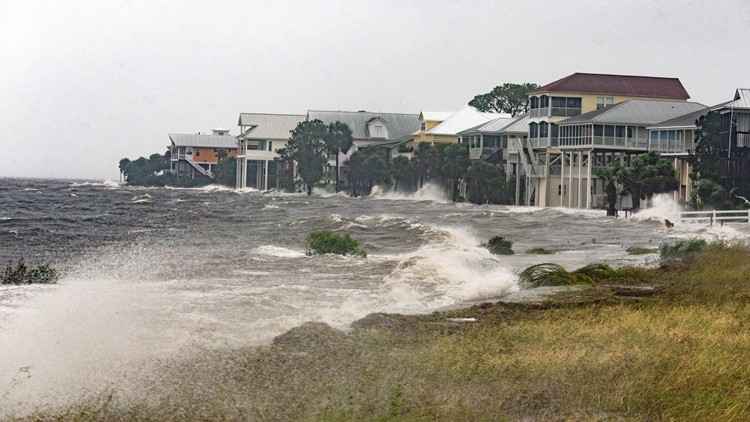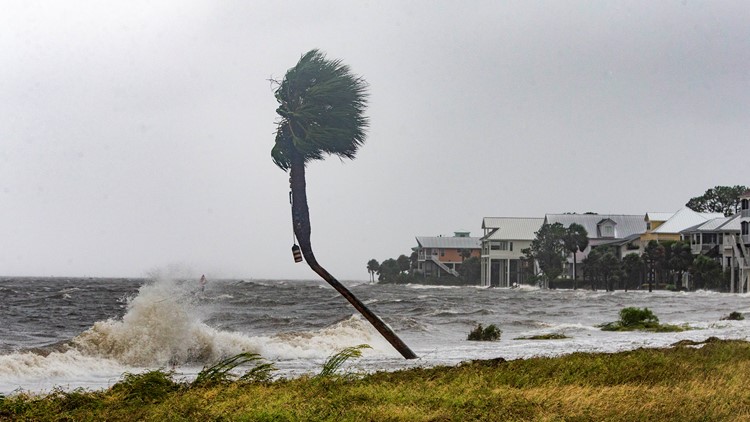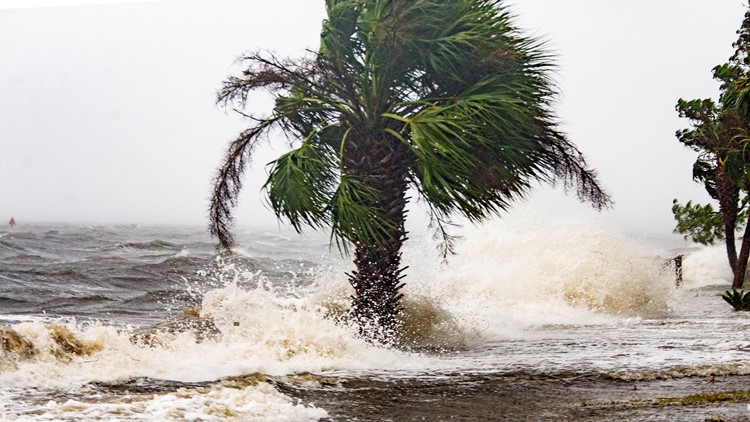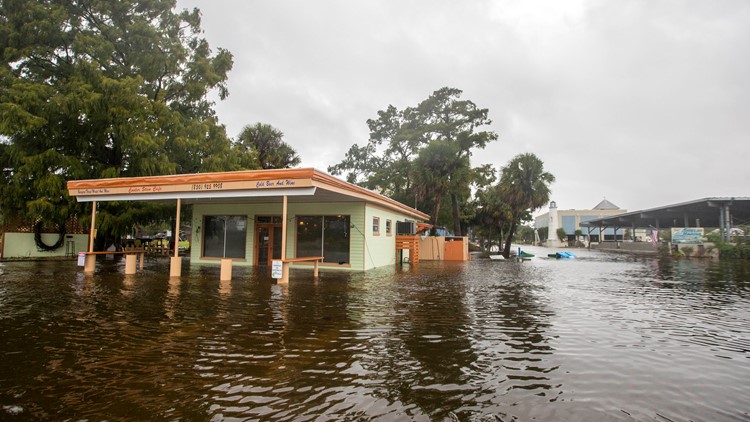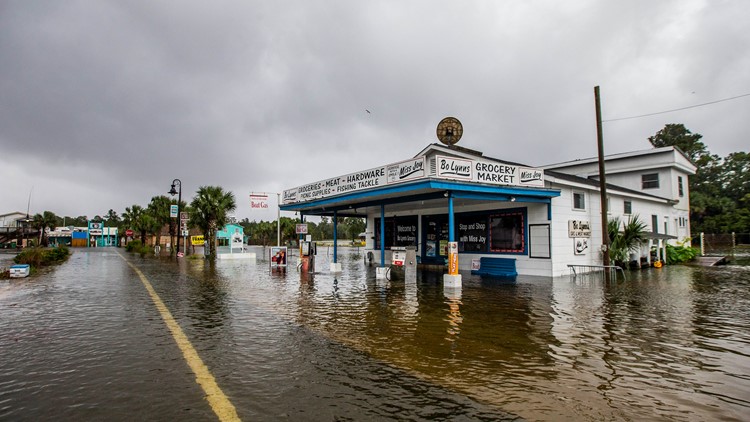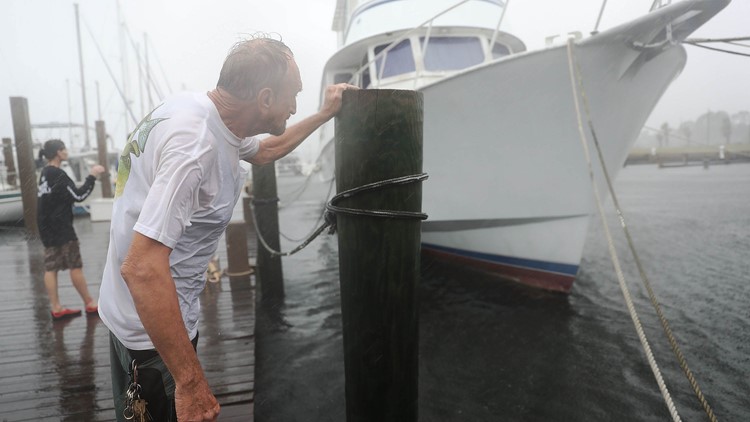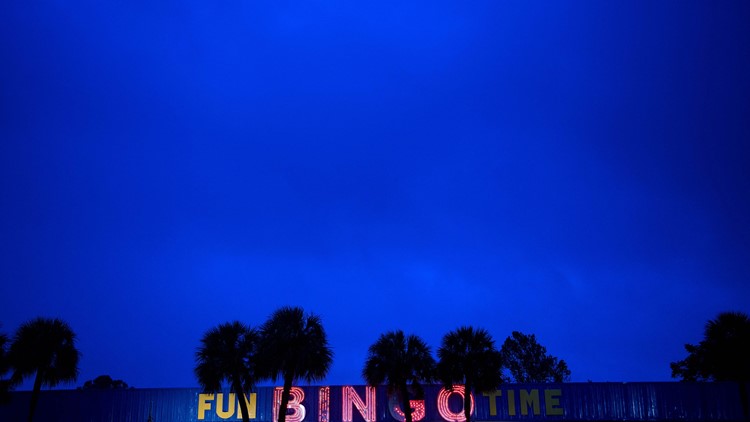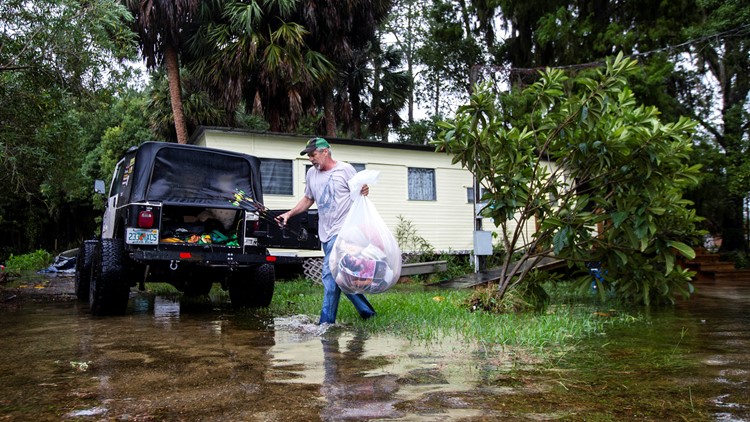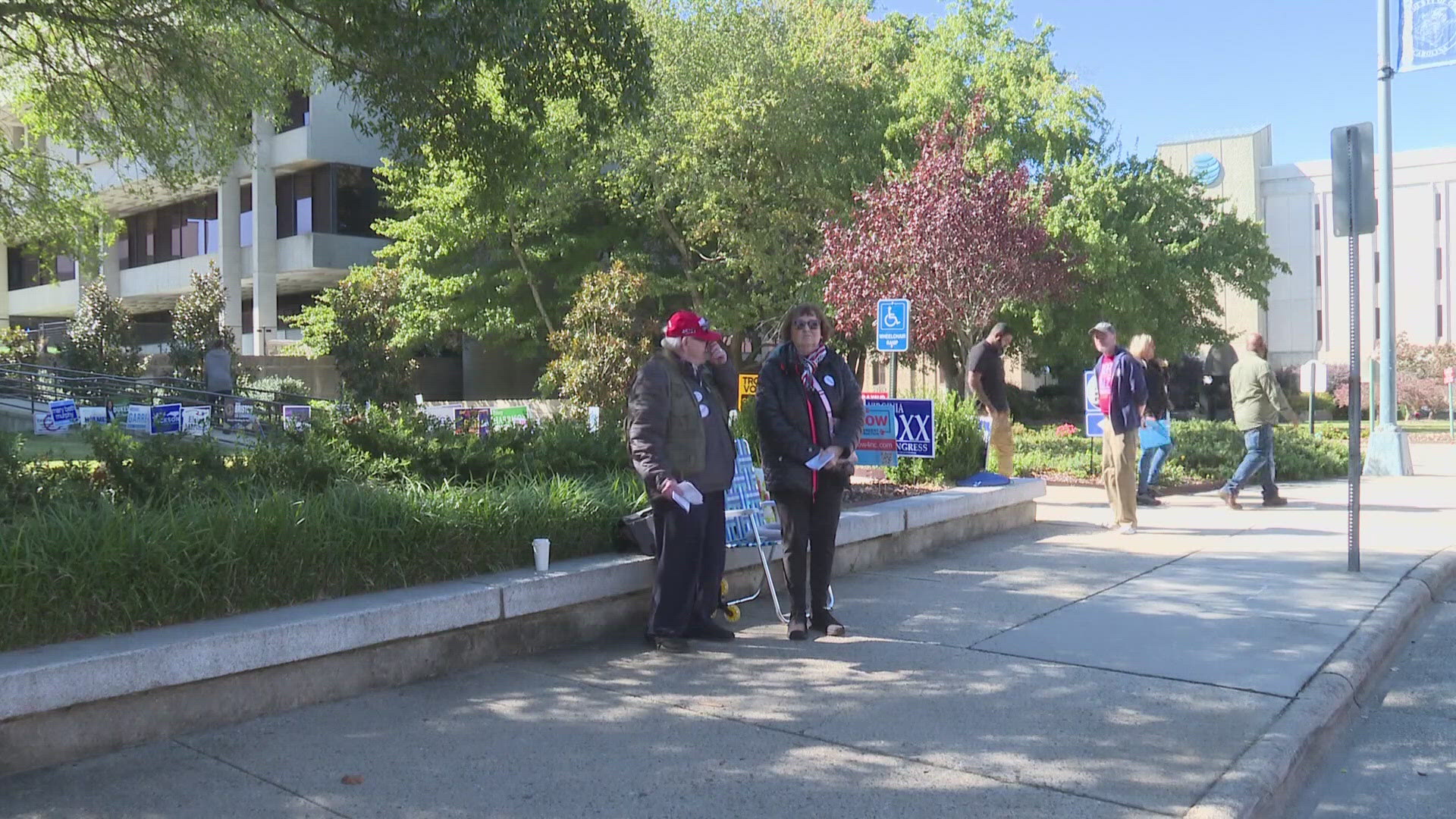PANAMA CITY, Fla. — A historic Hurricane Michael made landfall Wednesday near Mexico Beach, pulverizing homes, snapping trees and sending debris flying. As the clock struck Thursday, the storm had weakened to a tropical storm.
At landfall, it was nearly a Category 5 storm that smashed records as the strongest ever to roar onto the state's exposed Panhandle.
High winds and heavy rains lashed the coast. A quarter of a million homes and businesses already were without power, and the number was rising rapidly. It could reach into the millions from the "potentially catastrophic" Cat 4 storm, which was packing sustained winds of 155 mph – just 2 mph short of Cat 5 status.
By 12 a.m. EDT Thursday, the storm’s winds had dropped to tropical storm strength with maximum sustained winds of 70 mph and it was moving northeast at 17 mph. It was centered about 30 miles southwest of Macon, Georgia.
The National Weather Service in Tallahassee said a hurricane "of this strength has NEVER made landfall in this region and thus this is an event that will have unprecedented impacts."
The high winds were knocking down trees and power lines. Storm surge, with forecasts of up to 14 feet in some areas, remained a major concern.
"It's historic, it's extremely life-threatening," said Kenneth Graham, director of the National Hurricane Center, said. “This storm surge is coming with a vengeance.”
Brock Long, administrator at the Federal Emergency Management Agency, warned that the brutal storm would "stay intact" as a hurricane as it roars through the Florida Panhandle and parts of Alabama and Georgia. The storm could leave wide swaths of the region powerless for weeks, he said.
Florida's Big Bend, a loosely defined area of the eastern Panhandle where the coastline bends to the south, was bracing for the worst. Graham said storm surge will inundate the Aucilla River there to a point where it will "flow backward."
"This is a nightmare hurricane for the Big Bend," said Ryan Truchelut, chief meteorologist at WeatherTiger. "Michael will be of a landfall intensity not seen for at least 100 years, and perhaps more."
In Panama City, about 20 miles northwest of Mexico Beach, the power went out at Country Inn Suites. The wind howled and rainwater leaked through the ceiling. A light pole toppled onto an SUV in the parking lot.
Betty Wexler, 86, lost a beach house to a storm more than 20 years ago. She remembers finding her bed frame in the sand, her neighbor's bathtub sitting inside it. She and her daughter booked a hotel room through Friday.
“I’ve already lost one house to a hurricane, and I’m scared to death of this one,” she said.
Perry and Mollie Williams were riding out the storm in their "fortress" home a block from the beach, their three cats and Rottweiler in tow.
“It’s our first storm (forecast) to be on top of us," Mollie Williams, a 17-year resident, said warily. "We’ve had a number of them come into the Gulf, and either come to the left or the right of us. But never on top of us."
Before even before landfall, Long had ominous words for those who stayed.
"Those who stick around to witness storm surge don’t typically live to talk about it," he said.
But hours before the storm hit, it was too late for many to flee.
"The time to evacuate coastal areas has come and gone," Florida Gov. Rick Scott said at a news conference Wednesday. "If you are in an inland county you might have one more chance to evacuate, but only if local officials say it is safe."
Scott said 1,000 search and rescue personnel were ready to respond as soon as Michael passes. Another 3,500 National Guard members were also ready to deploy, he said.
Michael's barometric pressure at landfall was 919 millibars, by that measurement the third-strongest hurricane to hit the U.S. on record, trailing on the 1935 Labor Day Hurricane and Hurricane Camille in 1969.
Tallahassee, a city of 200,000, sits 100 miles east of Panama City. The city could face hurricane-force winds of up to 100 mph – enough to knock down a lot of trees and power lines, Accuweather meteorologist Brett Rathbun warned.
Gale and James Berry fled to a city shelter in Lincoln High School's cafeteria. Gale Berry, 59, said their neighborhood was littered with debris and downed trees after Hurricane Hermine, which made landfall in 2016 as a Category 1 storm. She had no interest in riding out a Category 4 in her mobile home.
"You don't want to have to stay there," she said. "You could die."
On a full-throttle journey from the Gulf of Mexico, the National Hurricane Center said Michael will bring “life-threatening” storm surge, hurricane-force winds and torrential rainfall after developing from a seemingly minor tropical storm off Mexico's Yucatan Peninsula several days ago.
About 4.2 million people are under hurricane warnings, from the Panhandle and Big Bend areas in Florida into parts of southeastern Alabama and southern Georgia. Heavy rainfall will drench Florida’s Panhandle, Alabama, Georgia and South Carolina; up to 12 inches is possible in isolated locations.
On its current track, the core of Michael is expected to move northeastward across the southeastern U.S. on Wednesday night and Thursday, and then move off the Mid-Atlantic coast away from the United States on Friday.
Bacon and Rice reported from Mclean, Va. Contributing: Steve Kiggins, Wayne Price and Nada Hassanein, USA TODAY NETWORK


